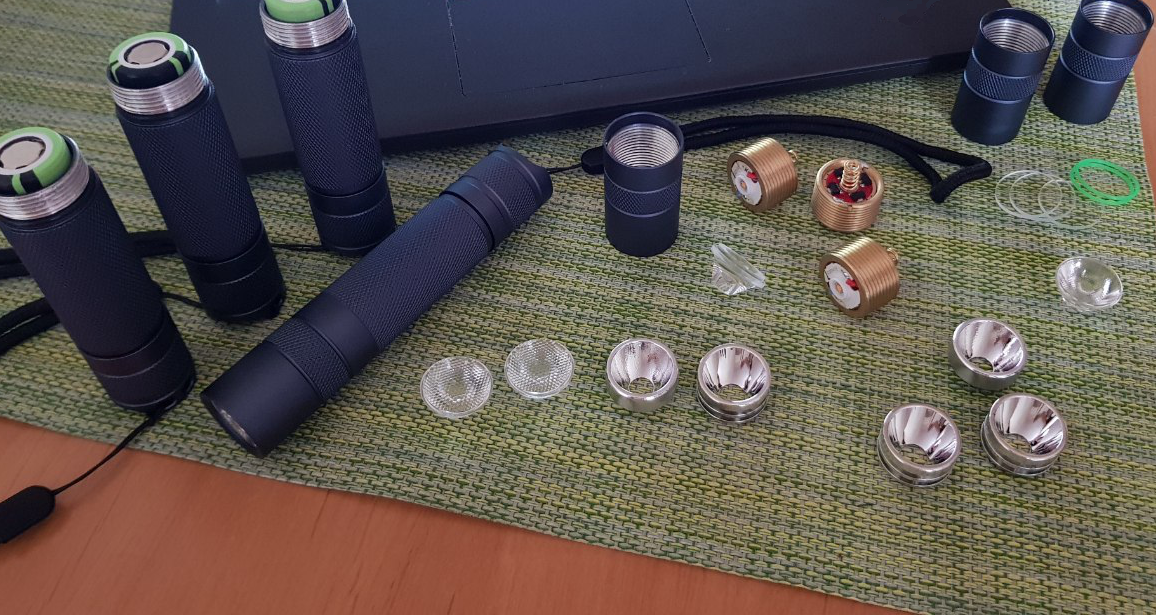The study of the influence of various reflectors and diffusers on the shape of the light beam

I am a cyclist. When you drive on public roads, you realize that there is not a lot of light, and once again I sat down to read forums and articles in order to buy something else good for myself on the steering wheel and on the helmet. Among other things, I caught sight of an article by a comrade known in cycling circles, in which he recommended simple and cheap Chinese lanterns as a universal remedy - they can be used both independently and as a bicycle lamp, and also in a bunch of different situations. One thing is bad - for different purposes a different shape of the light beam is necessary.
This model of flashlights is a kind of designer, to which the manufacturer supplies various types of reflectors and diffusers, so I ordered everything that was in stock, waited for delivery, and started testing.
So, I had:
')
- 4 identical flashlights. The package included smooth parabolic reflectors and plain flat glass as a diffuser.
- Orange peel reflectors are parabolic, but not smooth, but provided with small, 0.5-1 mm, irregularities across the entire inner surface.

- Diffusers in stock:

- Smooth (no photo)
- Small (0.5 mm) hexagonal cells
- Parallel edges of a triangular profile
- Large (1 mm) hexagonal cells
- Also large cells, as the previous paragraph. At first I decided that I put two identical ones - but it turned out that they give completely different light spots. after careful consideration it became clear that they have different forms of internal recesses at the radiator:

So, it turned out 12 options for combinations of reflectors and diffusers. I photographed the light beam that forms from each combination, and formed a pivot table:

Based on these images, we can draw the following conclusions:
- The best point source (as a search lamp) is formed with a combination of a smooth parabolic reflector and without a diffuser.
- Paradoxically, the use of an orange peel reflector has almost no effect on the light beam. Compared with the type of diffuser, its influence is minimal.
- The use of an orange peel reflector without a diffuser increases the angular size of the central beam by about 1.5 times.
- The most smoothly growing beam (with intensity increasing towards the center, approximately according to the Gaussian law) is obtained by combining an orange-peel reflector and a large-mesh diffuser. Reflector makes the distribution a little smoother. Such a bundle is suitable, for example, for attaching to a helmet for night skiing in the forest.
- A wide beam of uniform intensity did not turn out for any combination, but closest to it was a smooth diffuser with a smooth reflector. In the center, with such a combination, artifacts similar to the form of a radiating crystal are observed.
- And, finally, the most interesting result is obtained when combining the orange peel reflector and the ribbed diffuser. Such a combination allows one to obtain a beam expanded in one plane. Such light is ideally suited as a bicycle headlight, as it will allow to illuminate a fairly wide angle and not dazzle oncoming pedestrians and drivers of other vehicles, which, given the very serious power of this flashlight, is an actual problem.
Source: https://habr.com/ru/post/453018/
All Articles